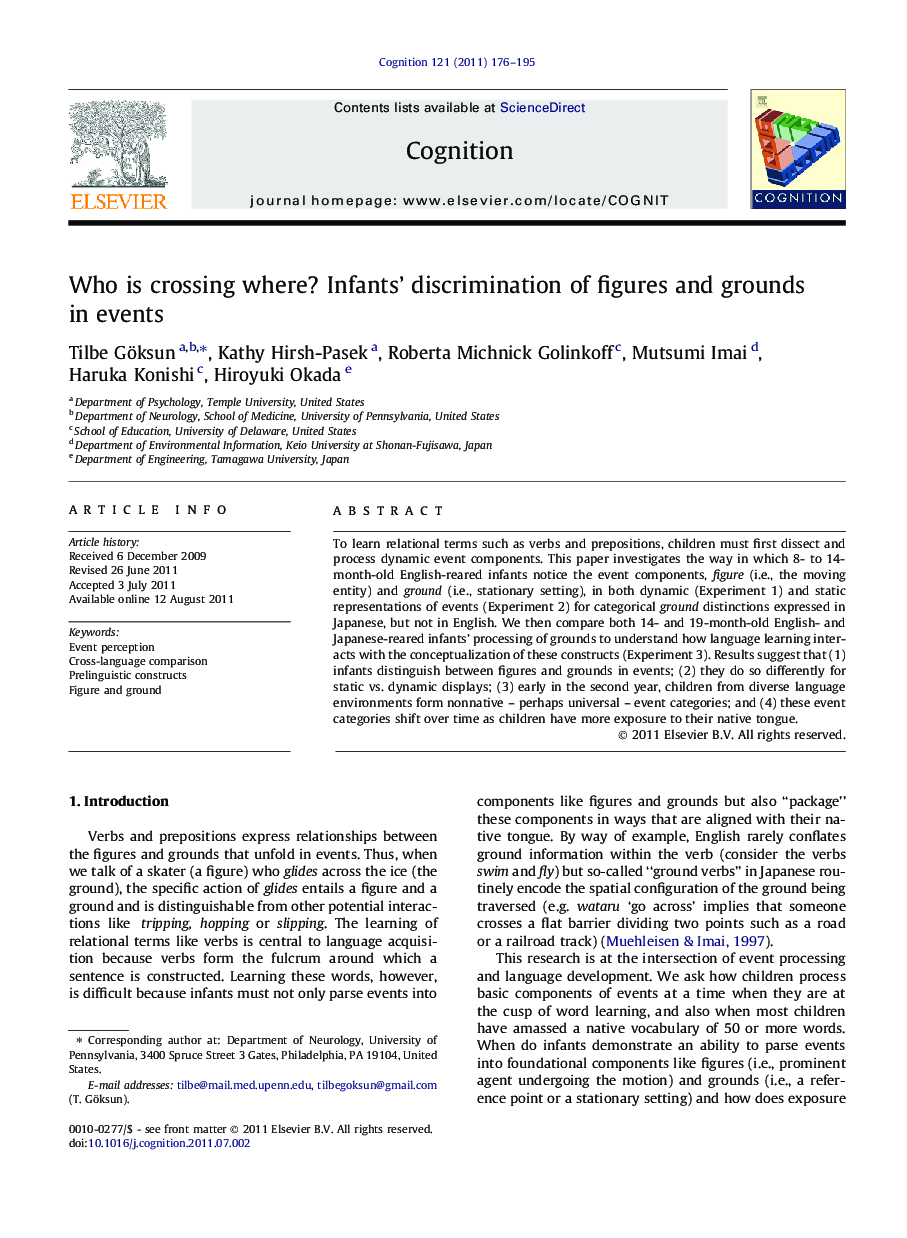| کد مقاله | کد نشریه | سال انتشار | مقاله انگلیسی | نسخه تمام متن |
|---|---|---|---|---|
| 926557 | 921879 | 2011 | 20 صفحه PDF | دانلود رایگان |

To learn relational terms such as verbs and prepositions, children must first dissect and process dynamic event components. This paper investigates the way in which 8- to 14-month-old English-reared infants notice the event components, figure (i.e., the moving entity) and ground (i.e., stationary setting), in both dynamic (Experiment 1) and static representations of events (Experiment 2) for categorical ground distinctions expressed in Japanese, but not in English. We then compare both 14- and 19-month-old English- and Japanese-reared infants’ processing of grounds to understand how language learning interacts with the conceptualization of these constructs (Experiment 3). Results suggest that (1) infants distinguish between figures and grounds in events; (2) they do so differently for static vs. dynamic displays; (3) early in the second year, children from diverse language environments form nonnative – perhaps universal – event categories; and (4) these event categories shift over time as children have more exposure to their native tongue.
► Three studies examined infants’ abilities to process figures and grounds in events.
► Infants noticed figures and grounds in both static and dynamic events.
► English- and Japanese-reared 14-month-olds formed similar ground categories.
► These event categories shifted over time as children learned their native tongue.
Journal: Cognition - Volume 121, Issue 2, November 2011, Pages 176–195